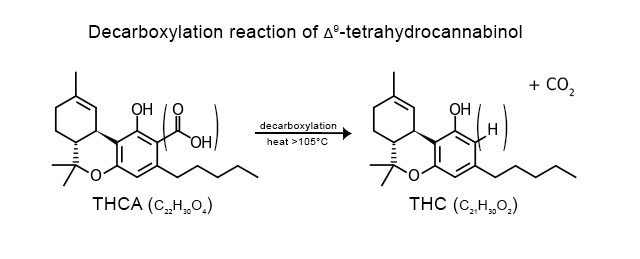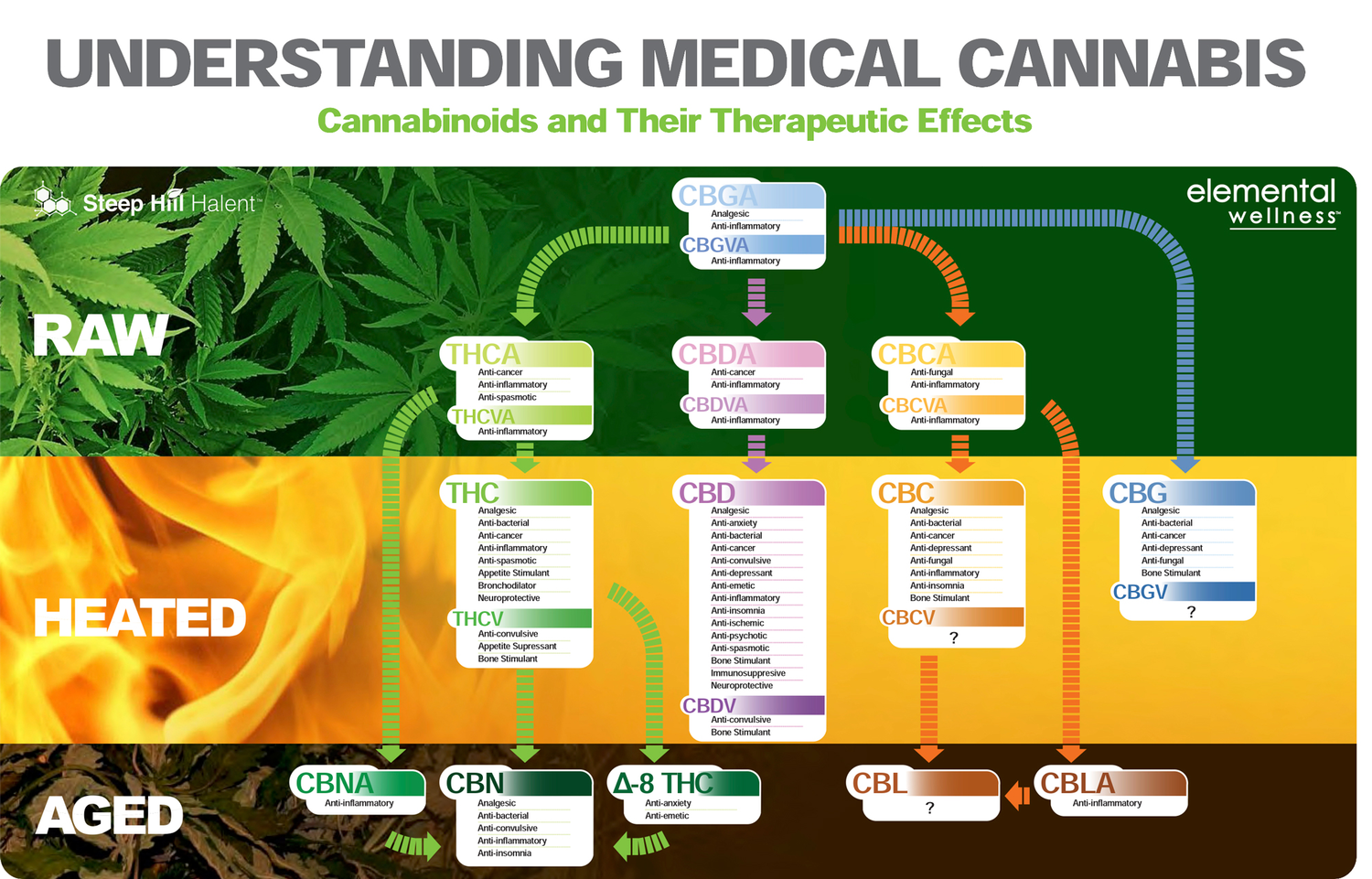Cooking with cannabis 101 basics
So you have decided to make the leap from flower to eddibles and have a fat sack of cannabis to back up the notion. Now we all remember a situation where someone consumes a sack of raw buds and then demonstrates a very high person. WRONG! Laugh at those people, and here is why. Raw cannabis when harvested has spent ~10 weeks in flower building trichomes and within those bulbous heads along with other cannabinoids is THCA, the prize compound loved by stoners all over the world. Now in order for that THCA to become available for the human Endocannabinoid system in our brains to fully enjoy its effects it needs to loose the carbon and become THC. Now comes the decarboxylation process, and it takes heat and or time of which time will only partially do the job. When we smoke the flower it happens instantly as the cherry moves along combusting those glorious bulbous trichome heads filled with THCA and is converted to THC by removing the extra carbon molecule. Short story we need to decarboxylate the pretty little buds so that when we cook with it or consume them, that lovely compound we call THC is available and we can enjoy the delightful goodie we so carefully prepared. So, just what the hell is decarboxylation and why do I need to do this to my cannabis. Back in the old days of sticks and seeds, we would eat those nasty ass brownies the neighbor made wondering if we’re high or was it all the weed we smoked waiting for them to take effect. Haphazardly some it was decarboxylated just in the baking process, but with high baking temps we can destroy some of what we were hoping to enjoy. So here is the skinny as quick an dirty as possible. The THCA in cannabis starts to decarboxylate at roughly 225˚ F in an oven for 30-50 minutes and the moister the flower it may go longer, but the lower the temp the better the end product. Temps above ~250˚ F will break down and degrade cannabinoids as well as terpenes and that can add an undesirable aroma or flavor as scorching can happen. As an example, a brownie mix will cook longer at a lower temp. Once this process is done correctly, making a variety of butters, oils and ingredients for cannabis cooking is now ready for a great recipe. In the next article we shall discuss how to make a quality canna-butter at home and dive into a Zoo favorite recipe.
Food is the best way to get and keep someones attention. Make it good and fun food and we have a dinner winner! Cannabis and cooking can be a confusing confection. Kief in the kitchen and not Kief Catcher, as we think he spends enough time at the grub hub. He is in good shape…Round is a shape right. We know he is on the level because the bubble is in the middle! Enough picking on our editor. Just kidding Mr. Kola you rock Sir. (just in case he reads this) Cooking with cannabis can be as rewarding as any use of the cannabis plant is. Many parts of the plant come into play in the kitchen. There are those that swear by stem teas, root teas, and we all know about the flowers. Cannabis culinary confections do not need to be hard, confusing or complicated while keeping you fully recreated and medicated. We shall share with you what we have experienced in the Kitchen. While we are not experts, we will share with you what we do know. So come back next week when we get into the discussion of what decarboxylation is and why you need to know.
Like most people the idea of food and cannabis go hand in hand. Let us take a closer look into the world of the culinary cannabis chef. Edibles have been around a long time. Cannabis has also evolved from the old school brownies to modern mass produced food products. Lets go down the journey of cannabis goodies from the kitchen. We shall look into everything cannabis and the kitchen.





